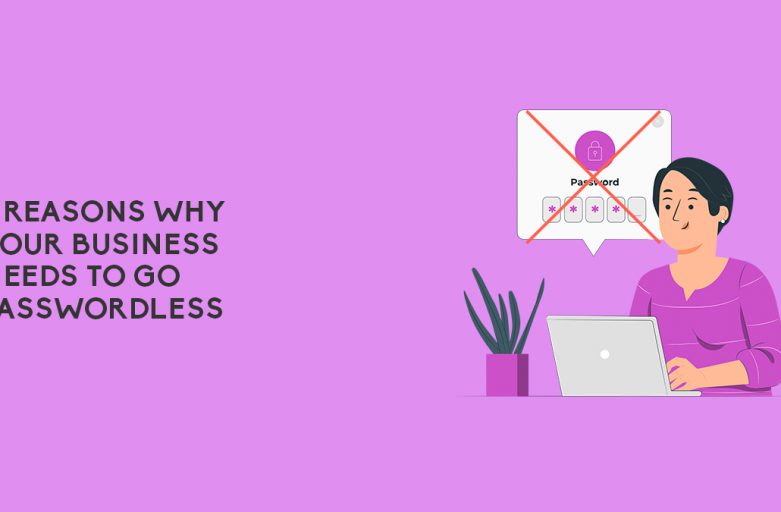
What are the reasons why your business needs to go passwordless?
- Convenience
- Security
- Productivity
With so much information that you need to protect from outsiders, it’s important to have a method of authenticating users before they gain access to your data. One way this has been traditionally done is through the use of passwords. But with the advancement of technology, it seems that going passwordless is not just possible but also beneficial when it comes to convenience, security, and productivity. This article will talk about the reasons why your business needs to go passwordless.
If you’re wondering how passwordless authentication works, it’s simple and user-friendly. Instead of putting in the usual letters and numbers, a device — often a smartphone — will ask for your fingerprint, face, or PIN. One example is the Microsoft Authenticator application that you can use when logging in to your account to access Office 365 services.
Now that you have a basic idea of how passwordless authentication works, learn more about its benefits below.
Convenience

Passwords have always been the main medium used for authentication. When you log in to your e-mail or bank account, you need to enter a string of letters and numbers to gain entry. This is also applicable when requesting access to your company data.
Most of you probably used memorable phrases and numbers so you won’t have difficulty logging in to your accounts. You might reuse the same combination for several applications and accounts too. But the problem with this is that it creates weak passwords.
The next step is to create passwords that won’t easily be guessed. This can be done by adding symbols, using both uppercase and lowercase letters, numbers, and the like. Or maybe you may resort to auto-password generators.
You’ll need to update this regularly to keep your accounts safe. But the problem with this is that these passwords are difficult to remember. And it might be inconvenient to re-create passwords every time. Dealing with lost or forgotten codes is a hassle too.
But going passwordless means that you don’t have to keep re-creating and remembering passwords. Instead, you can use an authentication app on your smartphone to get into your account. Input your fingerprint, show your face, or enter a One-Time Pin sent to your device.
Security

As said before, memorable passwords are easy to remember, but they’re often weak and easy to guess. What makes weak passwords a potential problem for your organization is it increases the risk of a data breach. Hackers can use a number of tools and techniques to guess the password and subsequently access company data.
For one, they can use the password spraying technique. Cybercriminals will use a list of common passwords until they get into an account. This might sound impossible, but many people still use passwords such as “123456” and “qwerty” in an attempt to make it more memorable.
Aside from these, data breaches can also happen through social-engineering attacks such as phishing. In this situation, the hacker attempts to trick your employees into giving them their credentials — including the username and password. This is effective because the hacker pretends to be a legitimate company, website, or partner vendor.
This is why it’s important to train your employees in password management. But in other cases, it’s also beneficial to go passwordless as it can make it more difficult for hackers to perform a potential data breach. Compared to passwords, fingerprints and biometric identifiers are harder to spoof.
Passwordless authentication is even more secure if used with multi-factor authentication methods. This is an identity verification process that requires additional factors of proof before an account can be accessed. For instance, after entering your username or password, you need to enter your fingerprint into an authentication app before a personal account can be opened.
Productivity

If an employee loses a password, time is wasted. Instead of accessing the company data and applications, they have to wait for the IT team to reset the password. Add to this the time spent to create new strong passwords. This is the reason many employees opt for weak and easy-to-remember passwords instead.
Passwordless authentication is considerably more hassle-free. By replacing passwords with something the user is (biometrics), the log-in process is more convenient. Employees never have to remember and type in a password again. Instead, they have the authenticating factor with them anywhere they go — such as their fingerprint or facial features.
What this means for your company is that there will be less need for password resets. Your employees and the IT Team will have more time for core activities and other important tasks.
Key Takeaway
Passwords have always been the main means of logging into an account. But weak passwords can be problematic because there are a variety of tools and techniques a hacker can use to guess them.
On the other hand, strong passwords require additional characters, symbols, and numbers, which make them harder to remember for your employees. This can lead to wasted time in your organization, which is why going passwordless may be a better option.
There are plenty of other reasons why your business needs to go passwordless. If you need to know more about how this works, you can send us a message here at CT Link!

